Configuration
Visualizer for JIRA provides for custom configuration in addition to primary controls.
Basic configuration
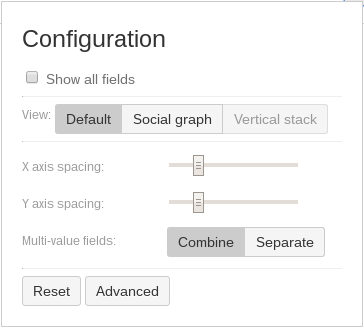
Show all fields
Each configuration dropdown is automatically adjusted to only contain fields that are likely to yield useful visualizations. Typically it means omitting fields which are empty, have the same value for all issues, or have different values for each issue. If you would like to use a field that is not visible in a dropdown, check the Show all fields checkbox.
X/Y axis spacing
The X axis spacing and Y axis spacing can be used to add or remove white space between axes. This is great way to view a large number of issues in a small space. Alternatively it can help make clearer which items belong to which axis.
Multi-value fields
When your selected fields contain multiple values, choosing Combine will create a single card for each issue. Choosing Separate will create multiple issue cards for each value in the field, essentially duplicating the issue and displaying it at its appropriate intersections.




View presets
Default
A standard configuration of your data.
Social graph
Social graph view will visualize where your major clusters lie. This view is only available when no X or Y axis fields are selected, and shows relationships best with combined multi-value fields.

Vertical stack
Vertical stack view stacks your issues for easy comparison between X-axis values. This view is only available when an X-axis field is selected.

Advanced configuration
Visualizer is built on a popular physics emulator to produce a force-directed graph configurator, and as such, has a number of ways to adjust these physical properties. Tweaking these settings can lead to the discovery of different organically occurring patterns.
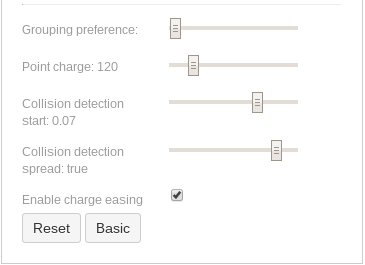
Grouping preference
The grouping preference control determines how linked issues in JIRA gravitate toward each other.
The farther left, the less the attraction.
By default grouping preference is weak, providing a visualization where items are primarily located at their intended coordinates with a slight hint of connection to other group members. Grouping preference is only active when Multi-value fields are combined.

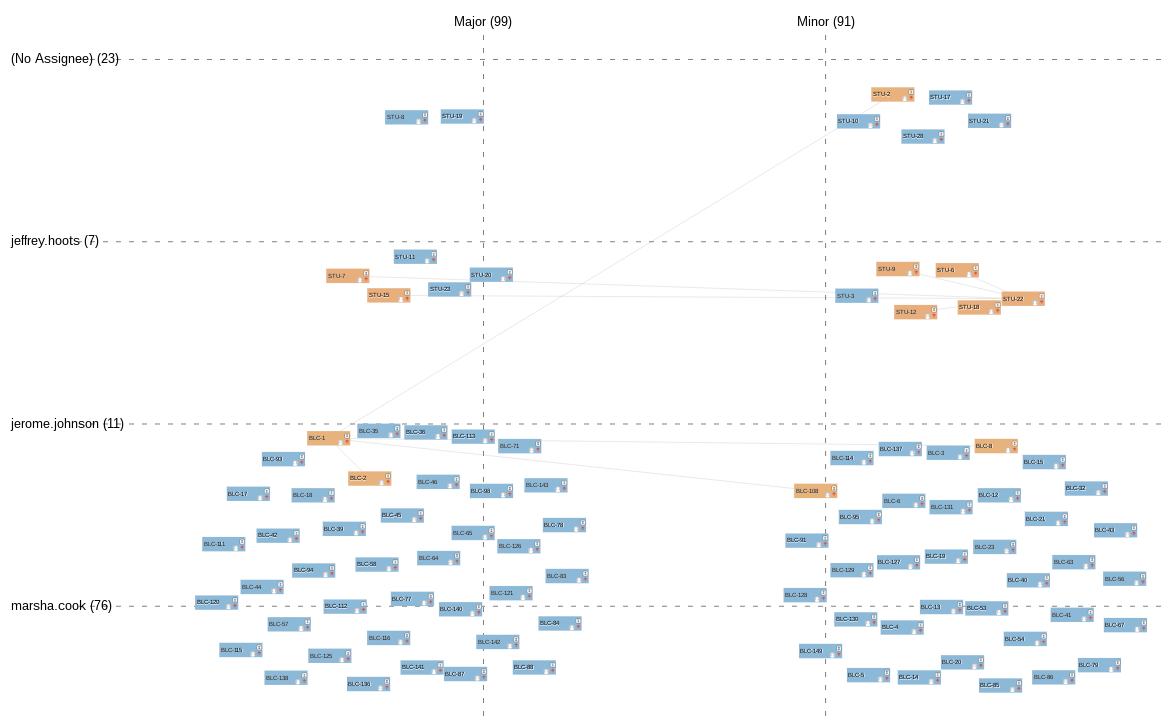

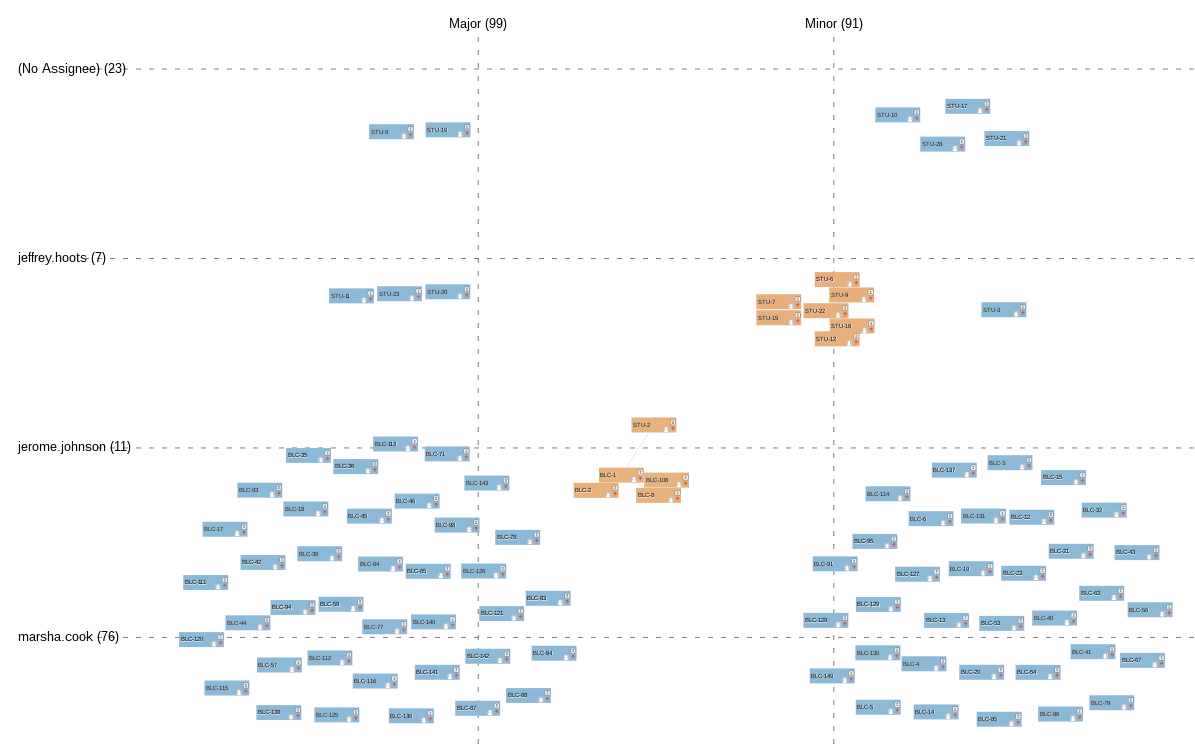
Point charge
Dust off your physics notes. Force directed graphs work by naturally repelling items from each other. Point charge is how hard they push away. A higher point charge means more repulsion.
The father left, the less the repulsion. Completely left sets a point charge of zero. This setting is independent of collision detection.
By default point charge is weak, providing a trade-off between visual spacing and allowing items to group around their intended coordinates.

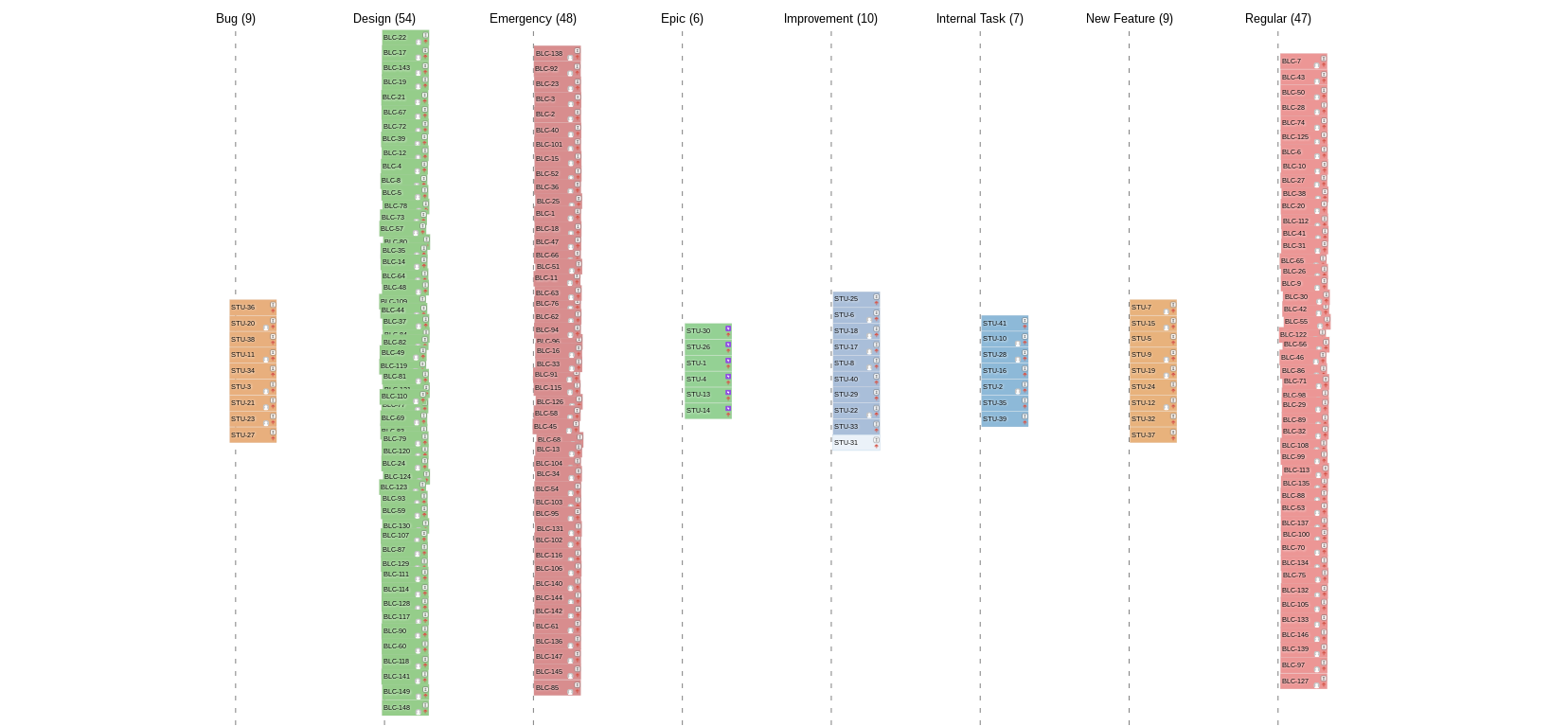

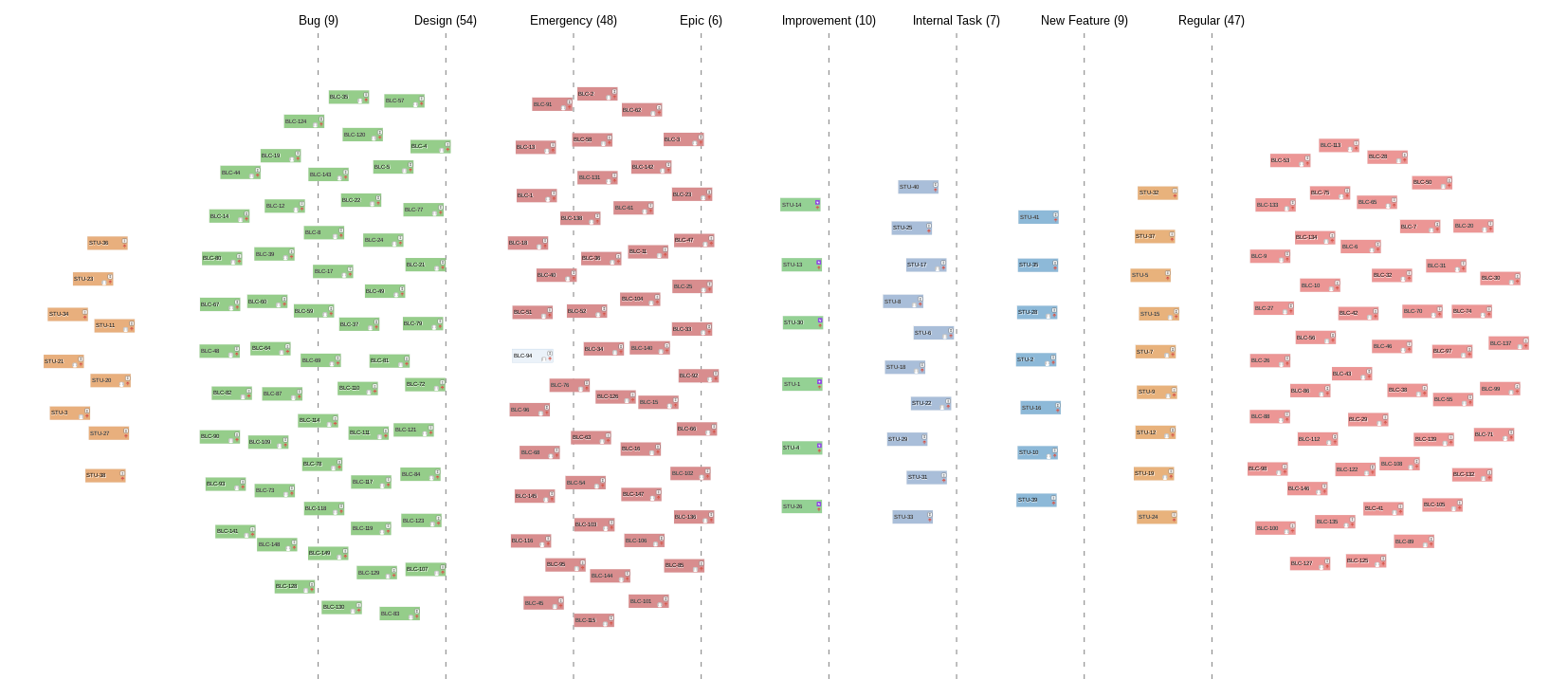
Collision detection start
Collision detection prevents cards from overlapping. Collision detection start determines how soon cards start “looking” for collisions on their way to their intended coordinates. If collision detection starts too early, the cards go wild and may not reach their ultimate destination, having given up after a number of attempts to move without colliding. If it starts too late, the cards may reach their destination, notice their overlap, and then explode outward trying to avoid collision after the fact.
If the slider is all the way to the left, collision detection is disabled, i.e. it waits so long that it never starts. The farther right, the sooner the cards will detect collisions on their way to their intended coordinates.
Collision detection start is slow by default to allow a higher probability of the titles reaching their intended coordinates, while still allowing them to undergo some collision detection.
Collision detection spread
Collision detection spread controls the strength of the repulsive force of collision detection, i.e. how vigorously a card will try to get away from its neighbor.
When set to the far left, cards will detect a collision, back up a little, and try again. To the far right, cards will detect a collision and fling themselves as far away as possible. This setting is independent of Point charge.
Collision detection spread is fairly strong by default to allow a high probability of the titles reaching their intended coordinates, while still ensuring no overlap.
Enable charge easing
When enabled, once a card reaches its destination, its point charge will reduce to zero. This establishes tight clustering around intersections. By enabling this setting and setting Collision detection start to zero, cards will overlap exactly.
